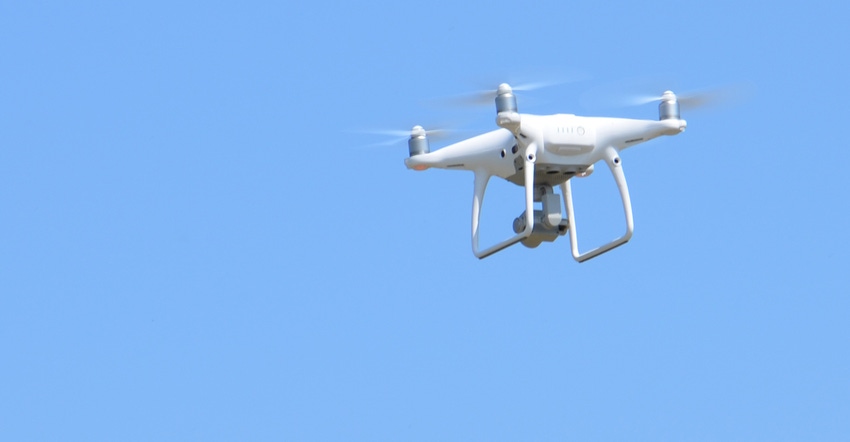
Richard Fellows and his brother Steve, New Washington, Ind., attempt to raise high-yield wheat every year, and follow it with double-crop soybeans. It’s still a winning combination in the southern half of Indiana in many years.
In 2017, Fellows walked one of the fields while the wheat was still green, scouting and looking for any possible issues. He didn’t notice any patterns.
Soon afterward, his seedsman flew a drone over the field. He produced an image and forwarded it to Fellows. Imagine Fellows’ surprise when he looked at the image and saw a pattern of narrow, darker green strips going across the entire field.
“I absolutely couldn’t see it walking across the field on the ground,” Fellows says. “There was no mistaking it in the image of the field taken from the air, however. It was an obvious pattern that went from one side of the field to the other side.”
This one experience made a believer out of Fellows when it comes to viewing fields from the air. Perhaps he would have eventually picked up on the problem, and perhaps not. From a few hundred feet in the air, the narrow, darker green strips at regular intervals were unmistakable.
“I believe we have things happen in corn and soybean fields that go undetected too, because we don’t get a good view from overhead,” Fellows adds.
Solve the mystery
The obvious guess was that the pattern of darker green strips had something to do with nitrogen application. Extra nitrogen tends to produce a darker green color as wheat greens up in the spring.
The Fellowses had 350 pounds of 9-23-30 fertilizer applied in the fall. That equates to just over 30 pounds of N per acre. If double the normal amount was applied — more than 60 pounds per acre — that would be enough to produce darker green wheat in the spring, Fellows reasoned.
He finally tracked down the problem to the fertilizer applicator. The rig was set to spread a 90-foot-wide swath, 45 feet on either side from the rear center of the spreader. Equipped with GPS for guidance, the GPS needed to match the spread width. As it turned out, someone hit the wrong setting for the GPS. It was set for 80-foot passes. The driver was making passes 80 feet apart, center to center, but the spreader was spreading across 90 feet. That resulted in 10-foot-wide strips across the field that received twice the normal rate of fertilizer. Those narrow strips received more than 60 pounds of actual N per acre, resulting in greener growth in the spring.
“It’s a little thing, but we have to get little things right when margins are tight,” Fellows says. “At current wheat prices, there’s no room for error if you want to end up with a profit.”
Fellows also wonders if the overlapping strips could interfere with soil test results on that field in the future. If cores happen to be pulled from those strips, they might reflect having received much higher total amounts of phosphorus and potassium per acre.
About the Author(s)
You May Also Like




